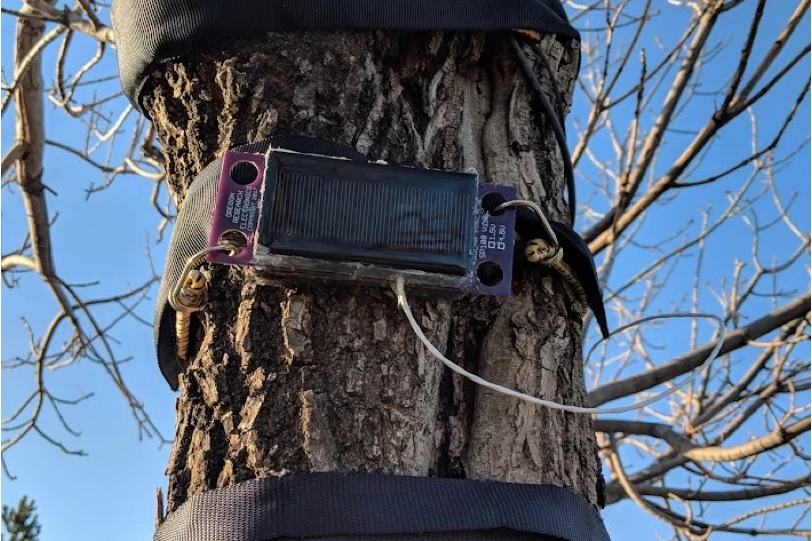Looking at mature trees, you may not think their trunks will "swing" in the wind. However, they do so to some extent Electronic measurements of rocking motion can be used to monitor their growth cycle, according to a new study Although trees sway in the wind all year round, the way they sway depends on how much water is present in the trunk, branches and leaves.

Add it to the quality of a tree in spring, when it absorbs water, for example, and when it grows leaves in summer. Therefore, its swing period is longer than when it is dry, fragile and leafless in winter. The term "swing period" refers to the time required for the trunk to swing from one side to the other.
To explore possible applications of rocking measurements, a team at the University of Colorado at Boulder tied accelerometers to two ash trees on the university campus in 2018. In the next few years, it was found that the rocking motion of these trees not only corresponds to their growth and dormancy period, but also can be used to determine when they bloom and release pollen.
"The development of flower buds coincides with the increase in the quality of trees, because trees are absorbing more water - and swing longer as the quality changes. In my study, I found that the swing period decreases with the opening of flowers and the release of pollen, and then increases with the germination of leaves after Fraxinus flowering," said lead scientist Deidre Jaeger
Now, it is hoped that the use of accelerometers can be used as a more practical alternative to other methods of remote monitoring of tree growth - especially in cities. For example, analyzing satellite images of trees can be difficult if you try to monitor a single species mixed with other species. Delay cameras can be expensive and cause privacy problems when used in urban environments.
"Accelerometers are discrete and continuous and are not affected by actions or physical obstacles in the urban environment," Jaeger said. "We got reliable data with high resolution."
A paper on the study was recently published in agriculture and forest meteorology 》In the magazine.